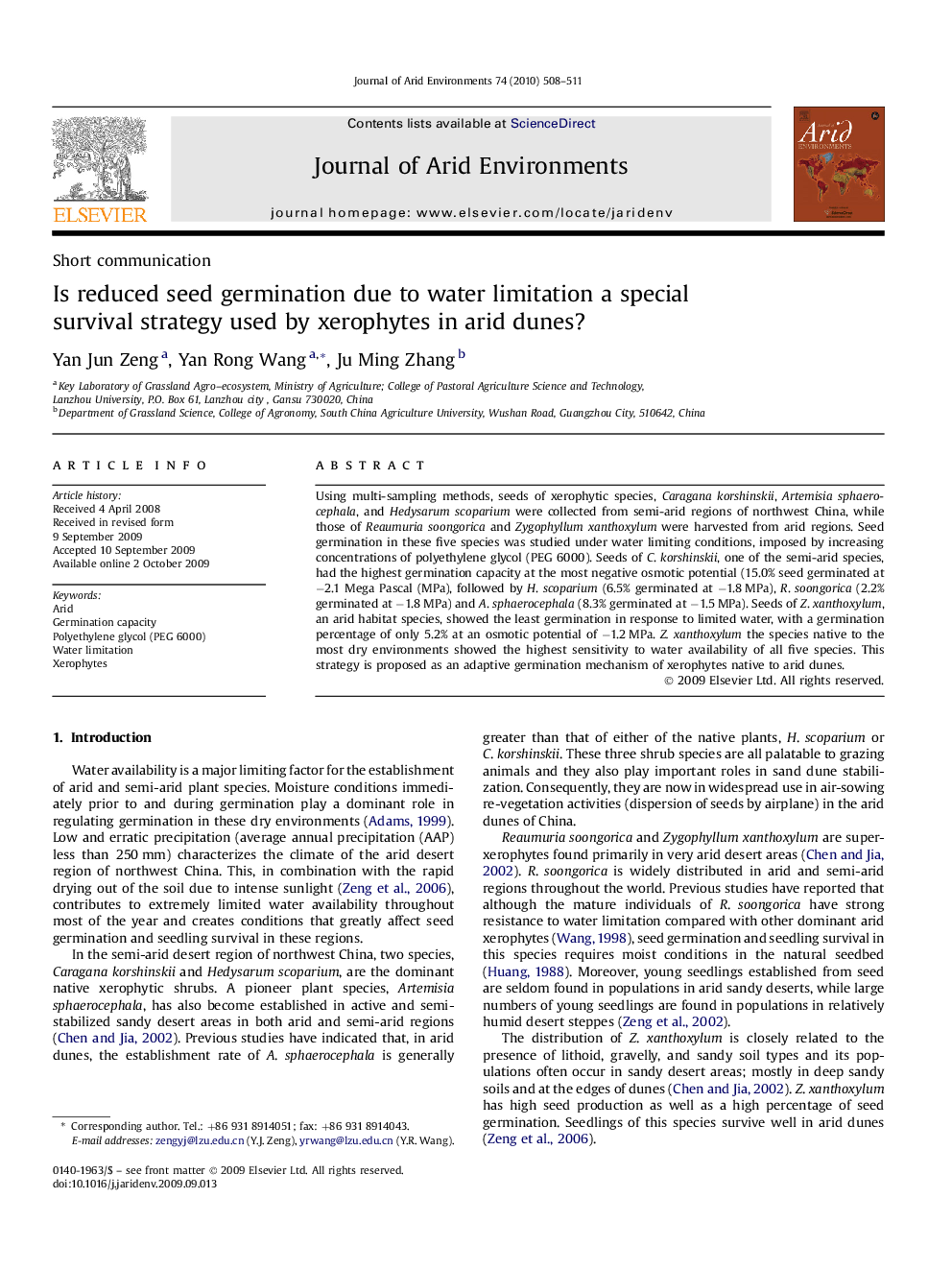| Article ID | Journal | Published Year | Pages | File Type |
|---|---|---|---|---|
| 4394293 | Journal of Arid Environments | 2010 | 4 Pages |
Using multi-sampling methods, seeds of xerophytic species, Caragana korshinskii, Artemisia sphaerocephala, and Hedysarum scoparium were collected from semi-arid regions of northwest China, while those of Reaumuria soongorica and Zygophyllum xanthoxylum were harvested from arid regions. Seed germination in these five species was studied under water limiting conditions, imposed by increasing concentrations of polyethylene glycol (PEG 6000). Seeds of C. korshinskii, one of the semi-arid species, had the highest germination capacity at the most negative osmotic potential (15.0% seed germinated at −2.1 Mega Pascal (MPa), followed by H. scoparium (6.5% germinated at −1.8 MPa), R. soongorica (2.2% germinated at −1.8 MPa) and A. sphaerocephala (8.3% germinated at −1.5 MPa). Seeds of Z. xanthoxylum, an arid habitat species, showed the least germination in response to limited water, with a germination percentage of only 5.2% at an osmotic potential of −1.2 MPa. Z. xanthoxylum the species native to the most dry environments showed the highest sensitivity to water availability of all five species. This strategy is proposed as an adaptive germination mechanism of xerophytes native to arid dunes.
